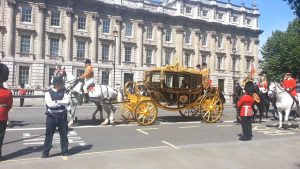In the tiny district of Queensbury, St. Elizabeth, on Jamaica’s south coast, Christmas meant big-time celebrations, and preparation usually started right after the August 1 Emancipation holiday. We would know it when a brisk north wind whispered “Christmas coming,” and one or two farmers would build a lime kiln to produce white lime, a process that has faded from our culture.
I remember the last kiln my father made, when my mother woke us up at four o’clock to see the limestone glowing red in the kiln. She said “maybe this is the last one you will see,” and indeed it was.
White lime was the product gleaned after rains fell on the burnt limestone. This was used to make the houses, trees, stone walls, water tanks with their large catchment areas called barbecues and the family cemetery look all clean and brand new. Everything got a crisp makeover for the season, and those who could not buy the white lime got it for free. Christmas was accorded the highest respect, since it was a time to celebrate the birth of Christ the Saviour.
During the season, shopping for new clothes, new school uniforms – the school year began in January – shoes, curtains, bed linen, kitchen, laundry and bath utensils, new sheep-wool pillows and new grass mattresses was a must. The old things had to go. White yams, delicacies most scarce, would have been reaped in November, dipped in white lime and dried in the sun to give the product a longer shelf life. Roadwork, weeding and bushing provided extra money for those who needed that kind of work. Animals to be slaughtered would have been identified with careful deliberation earlier in the year and groomed for the butchery.
The week before Christmas, there would be grocery shopping and getting up at four o’clock to walk over Big Hill to Grand Market in Belle Vue. Here was where you could get the produce not cultivated on our dry arid soil. Ginger, sugar cane, chocolate (cocoa), wet sugar and the round sugar head, breadfruit, all from Westmoreland parish nextdoor. In that week the women made bammy bread – special types of cassava cakes dried in the sun for longer shelf life.
On Christmas Eve night we would go out to the square with Mama and Papa for last-minute grocery shopping. The children got a chance to play for an hour or two out-a-shop, as the adults shopped for rice, flour, cooking oil, syrup and the delightful D&G sodas we only enjoyed at this time. We children played or lit firecrackers to herald in the season; starlight blazing in our hands, those who were too young to handle matches got small, round firecrackers call chi–boom and these would explode with a pop as they struck the hard ground.
We looked forward to getting our gifts when we woke up in the mornings. These gifts would either come from relatives abroad and/or our parents. For the girls it was usually dolls and the boys got some kind of motor vehicle toy. These toys would sometimes be in the house months before, but you didn’t dare go in search of them. Your parents’ private storage was out of bounds. Large, brown-paper-wrapped parcels came to the post office from relatives abroad. Registered letters with large sums rolled through the same channels. Back then, one U.S. dollar was exchanged for eight shillings. There were twenty shillings to the pound.
On Christmas morning, we would be out of bed at 4 a.m. It was all about who could get up earliest to burst the first fire cracker. We would listen for the neighbours’ children to respond in like manner, and this back and forth would continue until it became light enough to find the presents. From as early as four, the men would start visiting. My mother and father would get out of bed and off to the outside kitchen to make coffee. This was home grown and brewed for the men who would stop by.
Christmas greetings were exchanged at the kitchen door, warm fire on the fireside glowed with Christmas cheer. Specially shaped loves of buttered bread were cut up, with bammie (cassava bread) and slices of bun, corn or sweet potato pone sliced in huge chunks to go with the morning coffee. The aroma was tempting, but coffee was a forbidden drink for children as it could give you “hard head”, meaning that you would become a dunce. Milo, Ovaltine, or chocolate were the beverages of choice for the children.
Cooking would begin early, since eating was to be an all-day affair. Lunch, which was usually a big meal, tripled in size during Christmas for all the visitors expected to drop in. Dinner was a treat, with a selection of meats, beef, goat-meat or a cock-chicken, grown to perfection around the yard for this special day. Eating rice and peas was a treat at holiday time, as living on a farm meant that rice was not our staple.
Church was a must on Christmas Sunday; as a young child I cannot recall church on Christmas Day. Christmas cards were hung with care on a string in the house and decorated every piece of furniture in the hall. The more cards, the merrier was your Christmas. It usually meant that you had friends and relatives overseas who cared about you.
And nature’s treat for the season was the Christmas breeze. We could see the grasses flowering and feel the cool north wind, which would sometimes reduce our usual mid-80s temperature to a chilly 60 degrees Fahrenheit. At those times we would bring out the blankets and the sweaters preserved in camphor balls for the evenings. It was the most wonderful time of the year.
Next: Christmas time in old Jamaica: The Teenage Years
[email protected]













Tells us about one persons Christmas in old time Jamaica
[…] News Magazine prefers to reminisce, taking a look at Christmas in “Old Jamaica” here and […]
[…] News Magazine mamerina an-tsaina ny lasa, mijery ny Krisimasy tamin'ny “Jamaika fahiny” ato sy […]